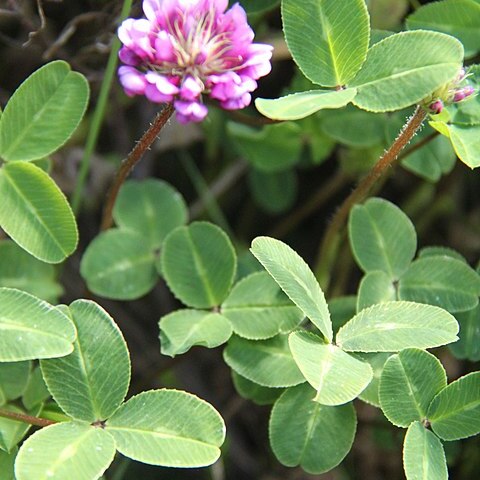Creeping perennial herb, 0.05-0.25 m high; stems procumbent, rooting at nodes. Leaves long-petioled. Leaflets 8-50 x 5-15 mm, ± obovate, apex emarginate to rounded. Stipules up to 20 mm long, triangular, tapering gradually, free portion as long as adnate part; lower ones persistent, covering stems. Inflorescences up to 30 mm in diam., many-flowered, globular; peduncles up to 150 mm. Flowers 8-13 mm long, purple. Calyx with teeth subulate from base, twice as long as tube. Petals: standard broadly obovate. Flowering time Aug.-Apr. Pod ± 5 mm long, ovoid, membranous, 1-or 2-seeded.
Prostrate perennial rooting at nodes, 30-60 cm. Leaves 3-foliolate, leaflets obcordate, finely toothed. Flowers subsessile in pedunculate heads, purple, calyx rupturing in fruit.
A clover herb.

